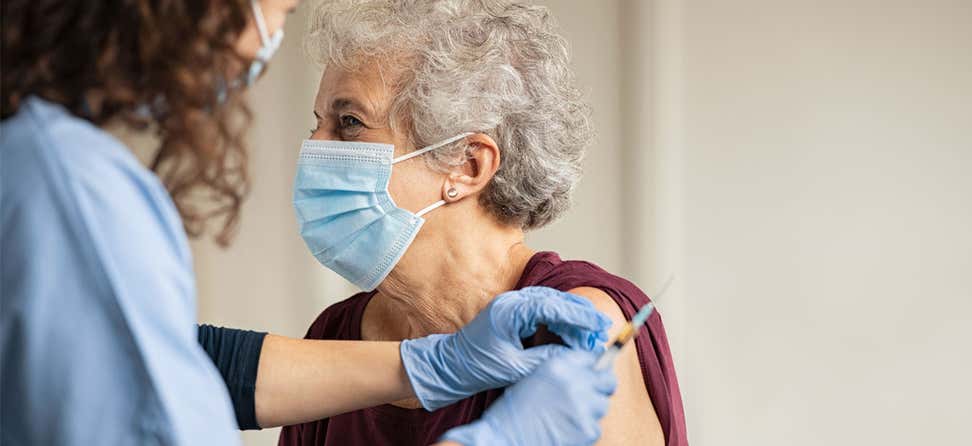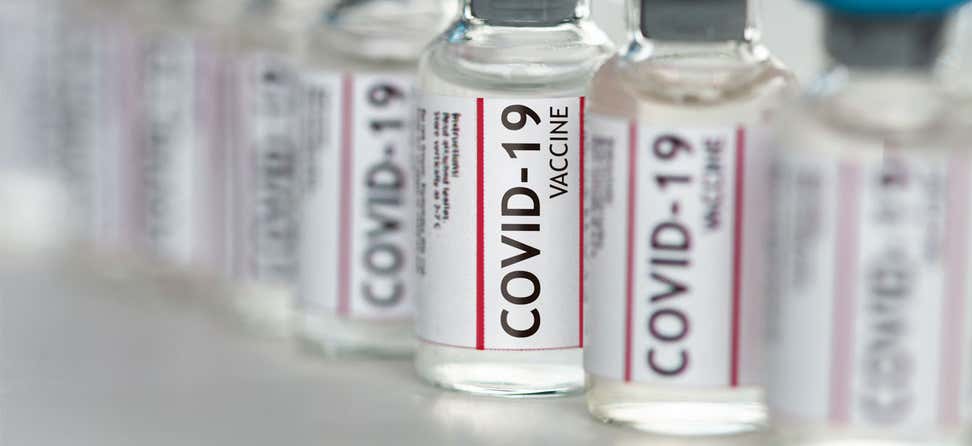Key Takeaways
If you have school-aged grandchildren, you probably hear about all the shots they need before attending school. What you may not know is it’s also good to check your own immunization record annually.
Our immune systems weaken as we age, putting older adults at higher risk for catching preventable diseases—even the ones we think are just for kids.
Here are 6 common communicable diseases that can put young and old at risk, plus steps you can take to protect you and your family.
1. Chicken Pox & Shingles
Your grandkids likely have received the chicken pox vaccine or varicella vaccine, which reduces their risk of getting it and minimizes the symptoms if they do. One of the long-term benefits of not getting chicken pox is not having to worry as much about shingles.
Shingles is a reactivation of the chicken pox virus that causes painful skin rashes. One in 3 adults—mostly over 60 years old—will get shingles. Symptoms also include fever, extreme exhaustion, and appetite loss, and they can be more severe with age. 1
You can pass the infection to anyone not immune to chicken pox until the blisters in the rash scab over. And even after the rash clears up, long-term pain in the outbreak area can linger.
Protecting against shingles
A shingles vaccine is recommended for adults aged 50+, regardless of whether they’ve had chicken pox. If you haven’t had chicken pox or shingles, your doctor may suggest both vaccines. It’s important to consult a doctor about which vaccine is right for you. 2
If your grandkids do get chicken pox, they will be contagious until their rash has scabbed over, so give them a few days to recover before visiting or lending a hand with care.
2. Measles
Measles is a highly contagious respiratory infection that is uncommon in the U.S. but still widespread in some parts of the world.
Measles symptoms can look like a cold, starting with a fever, runny nose, cough, and sore throat. A rash follows 3-5 days later. Measles is spread through coughing and sneezing, and the Centers for Disease Control (CDC) says it’s so contagious that if one person has it, 90% of the people close to that person who are not immune will become infected. 3
Older adults who contract measles are at the highest risk for some of the most severe effects, which include pneumonia, brain infection, and even death.
Protecting against measles
Your grandkids should have received a measles vaccine. The CDC considers you protected from measles if you were born before 1957 (because you were likely infected or exposed to measles).
But if you were born in 1957 or later, confirm that you’re up-to-date on your vaccinations. If you’ve only had one dose or if you can’t confirm whether you’ve been vaccinated, talk to your doctor about a booster.
If your grandkids catch measles, they’re most contagious four days before and up to four days after the rash appears. It’s best to keep your distance if any warning signs appear and stay in close communication with their parents if you plan to visit them.
3. Haemophilus influenzae type B (Hib) Disease
Hib is harmful bacteria that can affect many parts of the body and cause fever, congestion, joint pain, body aches, exhaustion, irritability, and more. Hib is known to lead to meningitis; pneumonia; severe swelling of the throat; and infections of the blood, joints, bones, and covering of the heart. 4 All of these health conditions can be life-threatening to an older adult.
Protecting against Hib
There are different versions of the Hib vaccine, but they all require several shots before age 1 plus a booster. Older adults and immunosuppressed adults are most at risk of getting Hib, particularly in close quarters like a nursing home or hospital. But if your grandchild is diagnosed with Hib, it’s best to avoid contact if they have cold-like symptoms, including sneezing, coughing, runny nose, or congestion.
4. Influenza
Many people believe they’ve never had the flu and they’re never going to get it. But what most people think of as flu isn’t actually influenza.
Influenza is a respiratory illness that can be particularly dangerous for older adults. It’s estimated that as many as 85% of seasonal flu-related deaths and as many as 70% of hospitalizations are among people aged 65+. 5
Flu peaks between December and February every year and manifests itself as a fever, sore throat, cold-like symptoms, body aches, and sometimes vomiting or diarrhea. The flu virus moves through crowded areas, like schools, spreading easily.
Although most people get over the flu in about a week, it can be very severe for those with weakened immune systems and those managing chronic conditions. Even for those who are healthy, flu can be very risky and cause pneumonia—which when combined with flu, is one of the top 10 causes of death for older adults. 6
Protecting against flu
The single best way to prevent the flu is to get an annual flu vaccine. This is true for your grandkids, your kids, and you. For people over age 65, there are influenza vaccine options, so talk with your doctor about which dose is right for you.
If your grandchildren come down with the flu, avoid contact with them for up to seven days after they’re infected. If there’s any sign of a fever after seven days, wait until their temperature is back to normal before visiting.
5. Pneumococcal disease
Pneumococcal infection is an umbrella disease that causes pneumonia, meningitis, ear infections, sinus infections, and bacteremia (bloodstream infection). The same bacteria responsible for strep throat/scarlet fever causes pneumococcal disease.
Symptoms vary depending the type of infection, but can include fever; coughing; shortness of breath; chest, joint, and ear pain; neck stiffness; confusion and disorientation; sensitivity to light; and chills.
Adults aged 65+ and children are most at risk, and they can get severe infections that can lead to brain damage, hearing loss, loss of limbs, and death. 7
Protecting against pneumococcal disease
Children are generally vaccinated before age 2. Two pneumococcal vaccines are available for adults, so talk with your doctor about which is right for you. Depending on your age, or whether you’re managing a chronic condition, you may need to get both.
Since pneumococcal disease is spread through coughing and person-to-person contact, stay on alert for signs that might indicate your grandkids are infected—including fever, cold-like symptoms, irritability, and sleeplessness—and try your best to avoid contact while they’re sick.
6. Fifth disease
Fifth disease is a common childhood infection that doesn’t have a vaccine, but is dangerous for older adults. Named fifth disease because it rounds out the five most common childhood skin diseases (chicken pox, measles, mumps, and rubella), the infection appears as redness on the face that looks like “slapped cheeks” and might also include lace-like rashes on the torso and limbs, as well as mild joint pain and swelling.
Fifth disease is contagious and spreads through contact with nose or mouth excretion. If you didn’t have fifth disease as a child, you are not immune.
Similar to in children, adults first have flu-like symptoms, but more severely. As many as 78% of infected adults will experience joint pain and stiffness in their hands, wrists, or knees. Among those with joint issues, up to 10% of infected adults will have prolonged chronic joint pain, which has been known to last up to nine years. 8
Preventing fifth disease
The only way to prevent fifth disease is to keep your hands clean, never share drinks or eating utensils with the grandkids, and encourage them to always cover their mouth when coughing or sneezing. And because kids are only contagious before the tell-tale rash appears, stay on alert for symptoms—low fever, runny nose, and headache—and avoid contact if any appear.
Make Your Immunization Plan
Immunizations play an important role in keeping the entire family healthy—especially during the school year. Make a plan this month to see whether you’re up-to-date on all your vaccines, and talk to your own children to verify that your grandchildren are also protected.
If you’re concerned about out-of-pocket expenses for your vaccines, remember that Medicare covers most or all costs associated with preventative services. Consult your insurance provider to see if a particular vaccine is covered and where the treatment can be administered.
Sources
- Centers for Disease Control and Prevention (CDC), Shingles (Herpes Zoster)
- CDC, Shingles Vaccination
- CDC, Transmission of Measles
- CDC, About Haemophilus influenzae Disease
- CDC, Flu & People 65 Years and Older
- CDC, Leading Causes of Death
- CDC, Pneumococcal Disease Risk Factors and Transmission
- CDC, Fifth Disease










